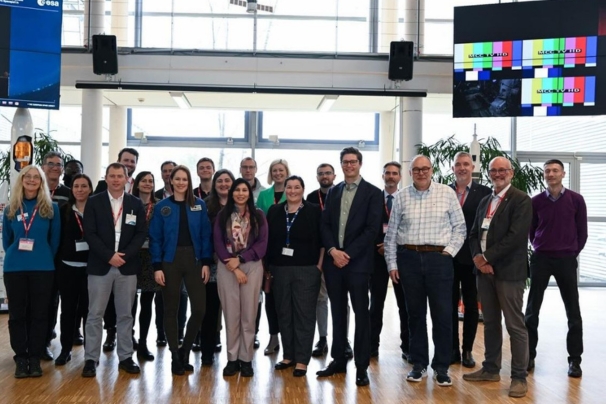University of Canberra Researcher Develops New Approach to Astronaut Training
The University of Canberra’s Professor Gordon Waddington has taken a giant leap forward with the world-leading testing method he developed for athletes at the Australian Institute of Sport (AIS) – it could now become part of the standard training astronauts receive before they leave the planet.
Professor Waddington travelled to Cologne, Germany earlier this year to visit the European Astronaut Centre (EAC) as part of a delegation led by the Australian Space Agency (ASA) to encourage new research and innovation opportunities between Australia and Europe in the area of astronaut training and preparation.
“It was very exciting to tour the Centre and share ideas with industry partners across a range of areas in space exploration,” Professor Waddington said.
“Australia’s contribution to the industry focuses largely on satellite and hardware systems. Here at the University, in partnership with the AIS and Prism Neuro, we are working with collaborators across the globe in relation to human performance in space.
“We assess how plasticity in the brain produces deficits in movement control, with technology we regularly use on athletes, and for falls risk assessment in older people.”
Professor Waddington travelled to the EAC in his capacity as a researcher at the University’s Research Institute of Sport and Exercise (UCRISE) and as the cofounder of Prism Neuro, a Canberra start-up which is commercialising its world-first technology.
During the visit, he demonstrated the technology by running through a series of tests with ASA’s first astronaut, Katherine Bennell-Pegg, in the lead-up to her graduation from the European Space Agency’s (ESA) training program.
Professor Waddington assessed her movement control skills and provided advice for optimising these skills to reduce the risk of injury. Ms Bennell-Pegg indicated that the testing provided her with “tremendous insight into improving her own movement skills.”
Ms Bennell-Pegg is now on a waitlist to potentially be allocated to a spaceflight assignment. Professor Waddington says it’s at this point in time that his testing of the inner ear, vision and proprioception (the ability to sense movement and body position), can predict performance, and predict and reduce the risk of injury.
“It’s these three systems that totally govern your ability to move,” Professor Waddington said.
“When you enter microgravity during space travel, it is essentially like bed rest here on earth – you don’t experience up or down, and there’s no way to train your muscles because there’s nothing to push up against.
“You see vision of astronauts in the space station moving around by pulling themselves along with their hands, and their feet just hang behind them.”
Professor Waddington said clinicians don’t have tests that detect a change in the brain that could indicate injury risk and the Prism Neuro technology addresses that gap.
“We can conduct our tests on a group of astronauts to select which one is least at risk of injury and therefore, the best candidate for an upcoming mission,” he said.
This project is part of Professor Waddington’s continuing collaboration with Massachusetts Institute of Technology’s (MIT) Astro Aero and Sports Labs, developing the testing of crew members going on commercial space flights. MIT currently uses Prism Neuro technology to carry out the testing.

